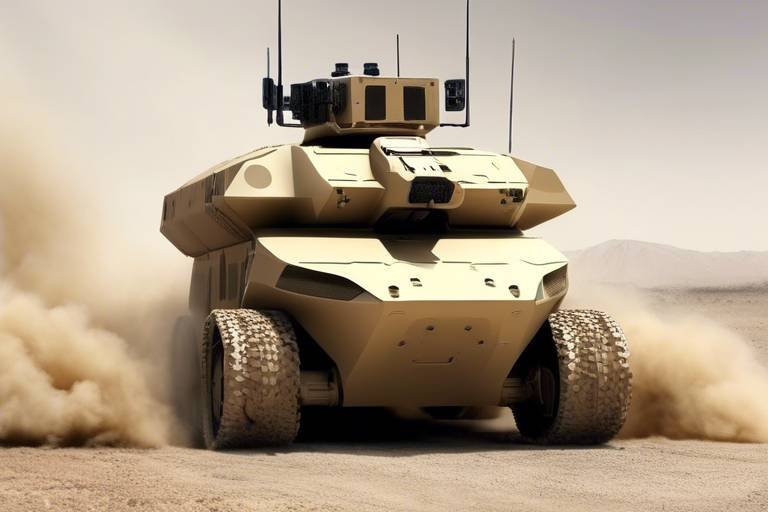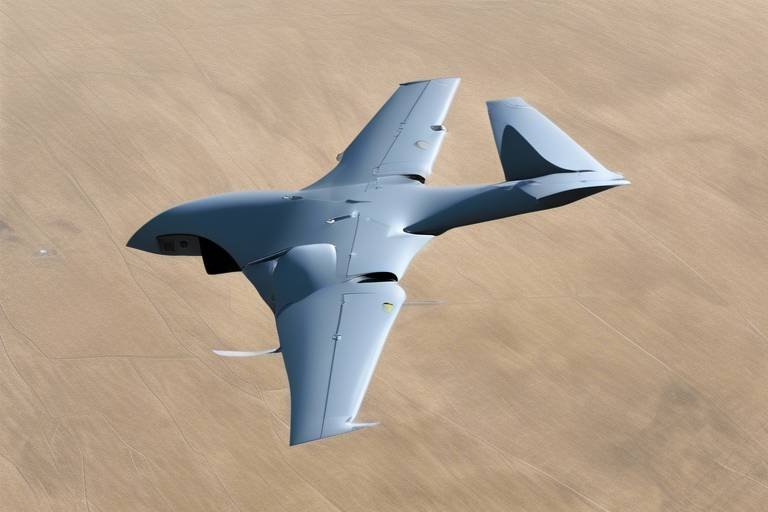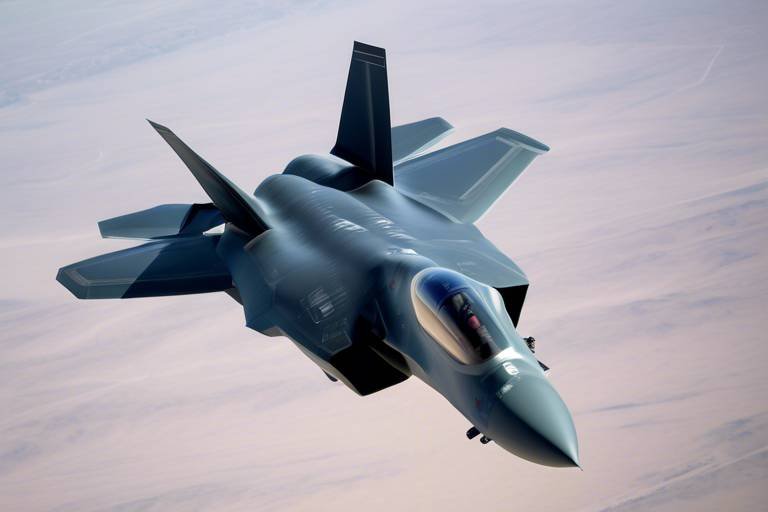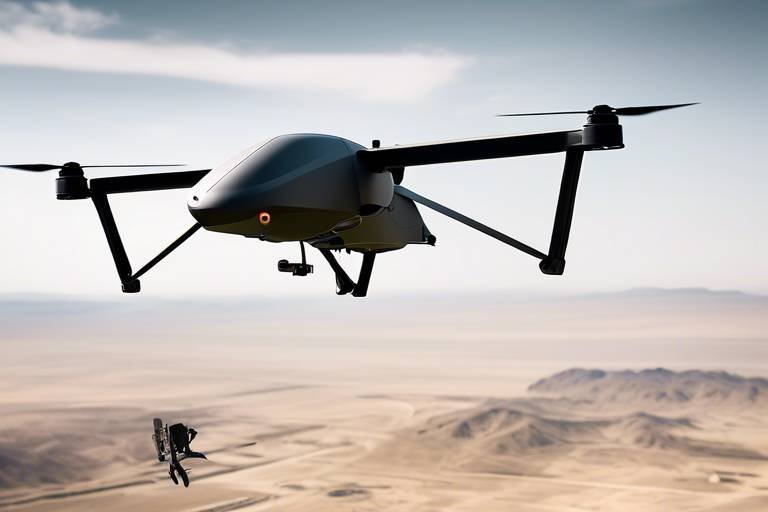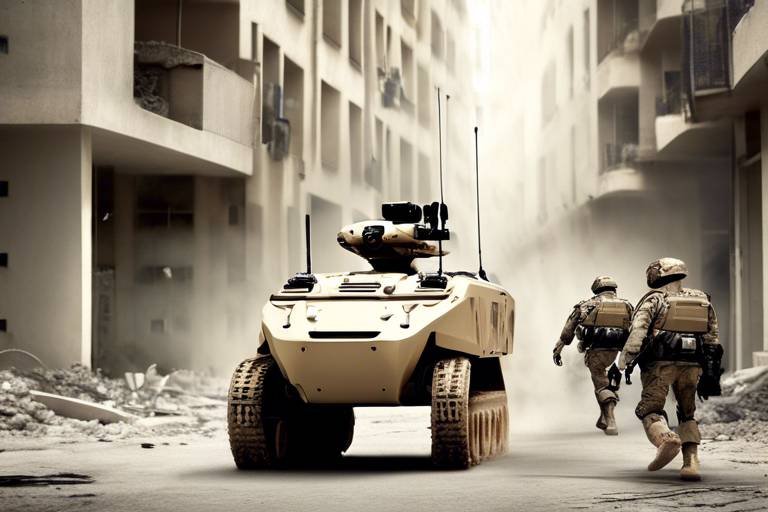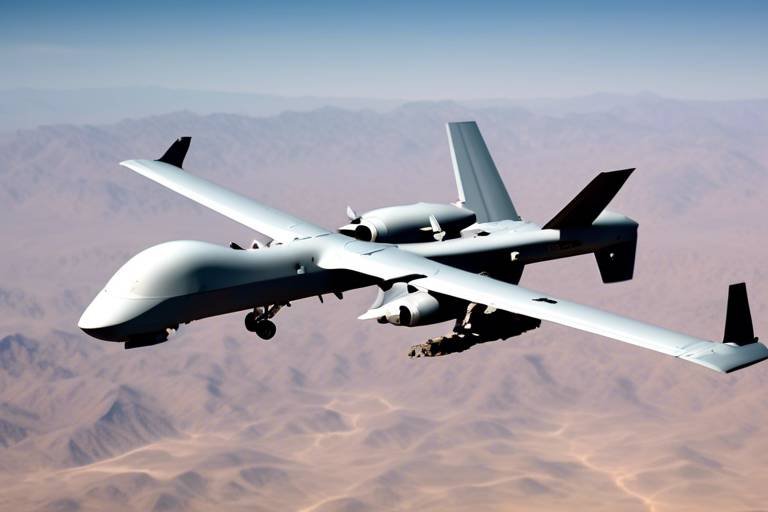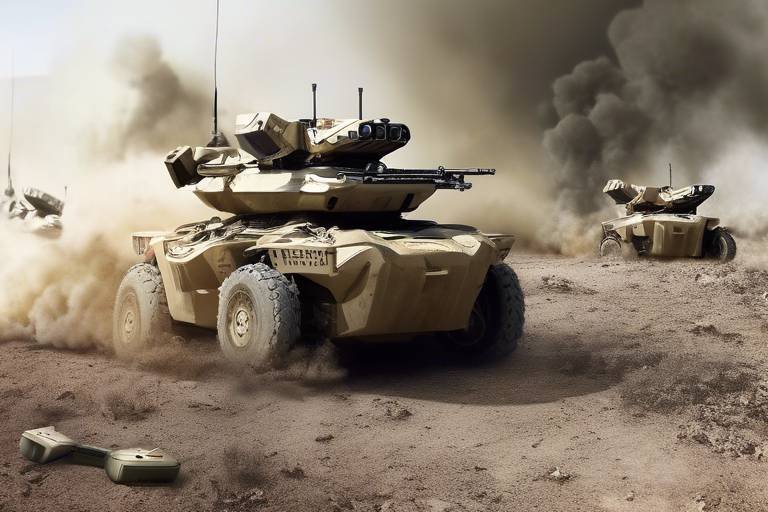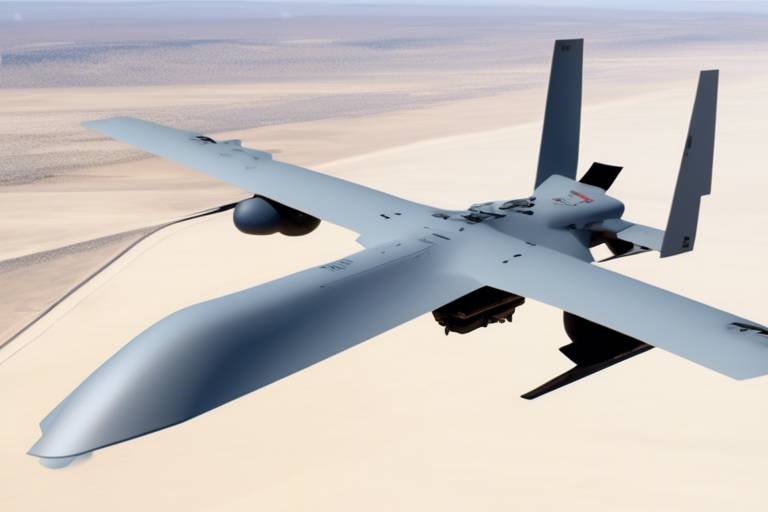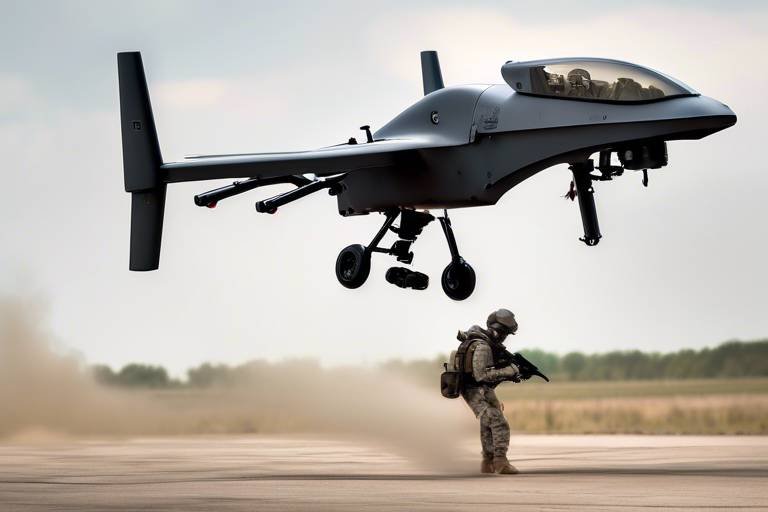Evaluating the Capabilities of the Robotic Combat Vehicle (RCV)
The world of modern warfare is rapidly evolving, and at the forefront of this transformation are Robotic Combat Vehicles (RCVs). These remarkable machines are not just a figment of science fiction; they are becoming a critical component of military strategy. Imagine a battlefield where machines can take on the most dangerous tasks, reducing the risk to human soldiers and enhancing operational efficiency. This article delves into the multifaceted nature of RCVs, examining their design, functionality, and the vast array of applications they offer in today's combat scenarios.
At the heart of RCV technology lies innovative engineering that ensures these vehicles are not only durable but also highly effective in a variety of environments. The materials used in their construction are selected for both strength and weight, allowing for mobility that is crucial in dynamic battlefields. Furthermore, the structural integrity of RCVs is paramount; they must withstand the rigors of combat while maintaining operational capabilities. This blend of design and functionality is what sets RCVs apart from traditional military vehicles.
One of the most fascinating aspects of RCVs is their autonomous navigation systems. These vehicles are equipped with cutting-edge technologies like GPS, LIDAR, and computer vision systems, allowing them to navigate complex terrains without human intervention. This autonomy not only enhances their efficiency but also opens up new possibilities for reconnaissance and surveillance missions. The integration of artificial intelligence further elevates their capabilities, enabling RCVs to make real-time decisions based on the data they collect.
- What are Robotic Combat Vehicles (RCVs)?
RCVs are unmanned vehicles designed for military operations, capable of performing a variety of tasks from reconnaissance to direct combat support. - How do RCVs enhance troop safety?
By taking on high-risk missions, RCVs reduce the need for human soldiers to enter dangerous environments, thereby increasing overall safety. - What technologies are used in RCVs?
RCVs utilize advanced technologies such as GPS, LIDAR, AI, and machine learning to navigate and operate autonomously. - What are the limitations of RCVs?
Current limitations include battery life, sensor reliability, and ethical considerations surrounding their use in warfare. - What is the future of RCVs in warfare?
The future of RCVs looks promising, with ongoing advancements in technology likely to enhance their capabilities and integration into military strategies.

Design and Engineering of RCVs
The design and engineering of Robotic Combat Vehicles (RCVs) are crucial to their effectiveness on the battlefield. These machines are not just mere metal shells; they are sophisticated systems that integrate advanced technologies, robust engineering principles, and innovative materials. The very essence of an RCV's design is to ensure mobility, durability, and functionality under various combat conditions. Imagine a vehicle that can traverse rugged terrains, withstand enemy fire, and perform complex tasks autonomously—this is the promise of RCVs.
One of the key aspects of RCV design is the choice of materials. Engineers often opt for lightweight yet strong materials such as titanium and composite fibers, which provide the necessary structural integrity without compromising speed and agility. This combination allows RCVs to maneuver swiftly across different environments, from urban landscapes to dense forests. Additionally, the structural design incorporates modularity, enabling quick repairs and upgrades, which is vital during prolonged missions.
Mobility is another critical factor that engineers focus on. RCVs are equipped with advanced propulsion systems that include all-terrain capabilities. They can navigate obstacles, climb steep inclines, and even traverse water bodies, making them versatile assets on the battlefield. The integration of advanced suspension systems further enhances their ability to maintain stability and balance, ensuring that they can operate effectively in unpredictable conditions.
Moreover, the engineering of RCVs involves sophisticated control systems that allow for precise navigation and operation. These systems utilize a combination of sensors, cameras, and software algorithms to provide real-time feedback to operators. This capability not only enhances the vehicle's performance but also enables it to adapt to changing battlefield scenarios. For instance, if an RCV encounters unexpected terrain or obstacles, it can quickly recalibrate its route, ensuring mission success.
In summary, the design and engineering of RCVs are a blend of cutting-edge technology and practical application. As military needs evolve, so too will the engineering principles that govern RCV development. The future of warfare may very well depend on how effectively these robotic vehicles can be designed to meet the challenges of modern combat.
- What materials are commonly used in RCV construction? RCVs typically use lightweight and strong materials like titanium and composite fibers to enhance mobility and durability.
- How do RCVs navigate difficult terrains? RCVs are designed with advanced propulsion systems and suspension technologies that allow them to traverse various environments, including rugged and urban landscapes.
- What role does technology play in RCV operation? Technology is integral to RCVs, with advanced sensors, cameras, and software algorithms that enable real-time navigation and operational feedback.

Autonomous Navigation Systems
In the realm of modern warfare, the ability to navigate autonomously is a game-changer for Robotic Combat Vehicles (RCVs). These vehicles are equipped with advanced navigation technologies that allow them to traverse complex terrains without human intervention. Imagine a soldier navigating through a dense forest or urban battlefield; now picture a robotic vehicle doing the same, equipped with the intelligence to avoid obstacles and adapt to changing environments. This is the power of autonomous navigation systems.
The core of these systems lies in a combination of technologies, including GPS, LIDAR, and computer vision. GPS provides the basic location data, but it’s the integration of LIDAR and computer vision that truly enhances the vehicle's navigational capabilities. LIDAR uses laser pulses to create a detailed 3D map of the surroundings, allowing the RCV to perceive its environment with incredible accuracy. On the other hand, computer vision processes visual data from cameras, enabling the vehicle to recognize objects, interpret scenes, and make decisions based on visual input.
One of the most exciting aspects of these navigation systems is their ability to function in environments where traditional GPS signals may be weak or unavailable, such as urban canyons or dense forests. By relying on LIDAR and computer vision, RCVs can maintain situational awareness and navigate effectively even in the most challenging conditions. This adaptability is crucial in combat scenarios where every second counts and the stakes are incredibly high.
At the heart of these autonomous navigation systems is the integration of artificial intelligence (AI). AI algorithms enhance the decision-making processes of RCVs, allowing them to adapt to dynamic combat environments. For instance, if an RCV encounters an unexpected obstacle, AI enables it to analyze the situation, assess possible routes, and choose the safest and most efficient path forward. This capability is akin to a human soldier making split-second decisions under pressure, but with the added advantage of data-driven insights.
Machine learning plays a pivotal role in improving the performance of RCVs through continuous data analysis and predictive modeling. By learning from past experiences, these vehicles can refine their navigation strategies. For example, if an RCV frequently encounters certain types of obstacles in a specific area, it can adjust its algorithms to avoid those obstacles in the future. This self-improvement mechanism is essential for mission success, as it allows RCVs to become more effective over time.
Real-time data processing is another critical component of autonomous navigation systems. RCVs must process vast amounts of data from various sensors instantaneously to make informed decisions. This capability is vital for maintaining situational awareness and tactical decision-making in rapidly changing environments. Imagine a battlefield where threats can emerge from any direction at any moment; RCVs equipped with real-time data processing can react swiftly, ensuring they remain one step ahead of potential dangers.
In summary, the autonomous navigation systems of RCVs represent a significant leap forward in military technology. By leveraging advanced technologies like GPS, LIDAR, and computer vision, combined with AI and machine learning, these vehicles can navigate complex environments with precision and adaptability. As we look to the future, the ongoing development of these systems promises to enhance the effectiveness and safety of military operations, revolutionizing the way conflicts are conducted.
- What are the main technologies used in RCV navigation? The primary technologies include GPS, LIDAR, and computer vision.
- How does AI improve RCV navigation? AI enhances decision-making, allowing RCVs to adapt to changing environments and avoid obstacles.
- Can RCVs navigate without GPS? Yes, RCVs can rely on LIDAR and computer vision to navigate effectively in GPS-denied environments.
- What role does machine learning play in RCVs? Machine learning allows RCVs to learn from past experiences and improve their navigation strategies over time.
- Why is real-time data processing important for RCVs? It enables RCVs to make quick decisions based on the current battlefield situation, enhancing their effectiveness.

Artificial Intelligence Integration
In the ever-evolving battlefield of modern warfare, Artificial Intelligence (AI) has emerged as a game-changer, particularly in the realm of Robotic Combat Vehicles (RCVs). These sophisticated machines are not just metal shells; they are equipped with advanced algorithms that allow them to process information, learn from their environment, and make decisions in real-time. Imagine a soldier who can analyze thousands of data points in mere seconds, predicting enemy movements and strategizing the best course of action—this is what AI brings to the table for RCVs.
One of the most compelling aspects of AI integration in RCVs is its ability to enhance decision-making processes. Traditional combat scenarios often involve human operators who must react quickly to changing conditions. With AI, RCVs can autonomously assess situations, weigh options, and execute complex missions without waiting for human input. This capability is particularly crucial in high-stakes environments where every second counts. For instance, an RCV equipped with AI can identify threats, prioritize targets, and engage in combat—all while minimizing risks to human soldiers.
But how does this integration work in practice? The backbone of AI in RCVs lies in several key technologies:
- Computer Vision: RCVs utilize sophisticated cameras and sensors to 'see' their surroundings, interpreting visual data to navigate and identify objects.
- Machine Learning: Through continuous learning from past missions and environmental data, RCVs improve their performance over time, adapting to new challenges.
- Predictive Analytics: By analyzing historical data, RCVs can forecast enemy actions and counter them effectively.
Moreover, the integration of AI allows for real-time situational awareness. RCVs can gather and process data from various sources, including satellite imagery, battlefield reports, and sensor feeds, creating a comprehensive picture of the operational environment. This capability not only enhances the effectiveness of the RCV itself but also provides valuable insights to human commanders, enabling them to make informed decisions based on the most current information available.
However, as we embrace the potential of AI in RCVs, we must also consider the challenges it presents. The reliance on AI raises questions about accountability and autonomy. If an RCV makes a decision that leads to unintended consequences, who is responsible? This ethical dilemma is a hot topic among military strategists and policymakers alike. Furthermore, the integration of AI must be approached with caution to ensure that these systems are reliable and can function effectively in the chaotic environments of warfare.
In conclusion, the integration of AI into Robotic Combat Vehicles is not just a technological advancement; it represents a paradigm shift in how military operations are conducted. As these vehicles become more autonomous and capable of complex decision-making, they hold the potential to reshape the future of warfare—enhancing operational effectiveness while also raising critical ethical questions that must be addressed.
- What role does AI play in Robotic Combat Vehicles?
AI enhances decision-making, situational awareness, and operational efficiency in RCVs, allowing them to operate autonomously and respond to threats in real-time. - Are there ethical concerns regarding AI in warfare?
Yes, the use of AI raises questions about accountability, decision-making autonomy, and the potential for unintended consequences in combat scenarios. - How does machine learning improve RCV performance?
Machine learning enables RCVs to analyze data from previous missions and adapt to new challenges, improving their effectiveness over time.
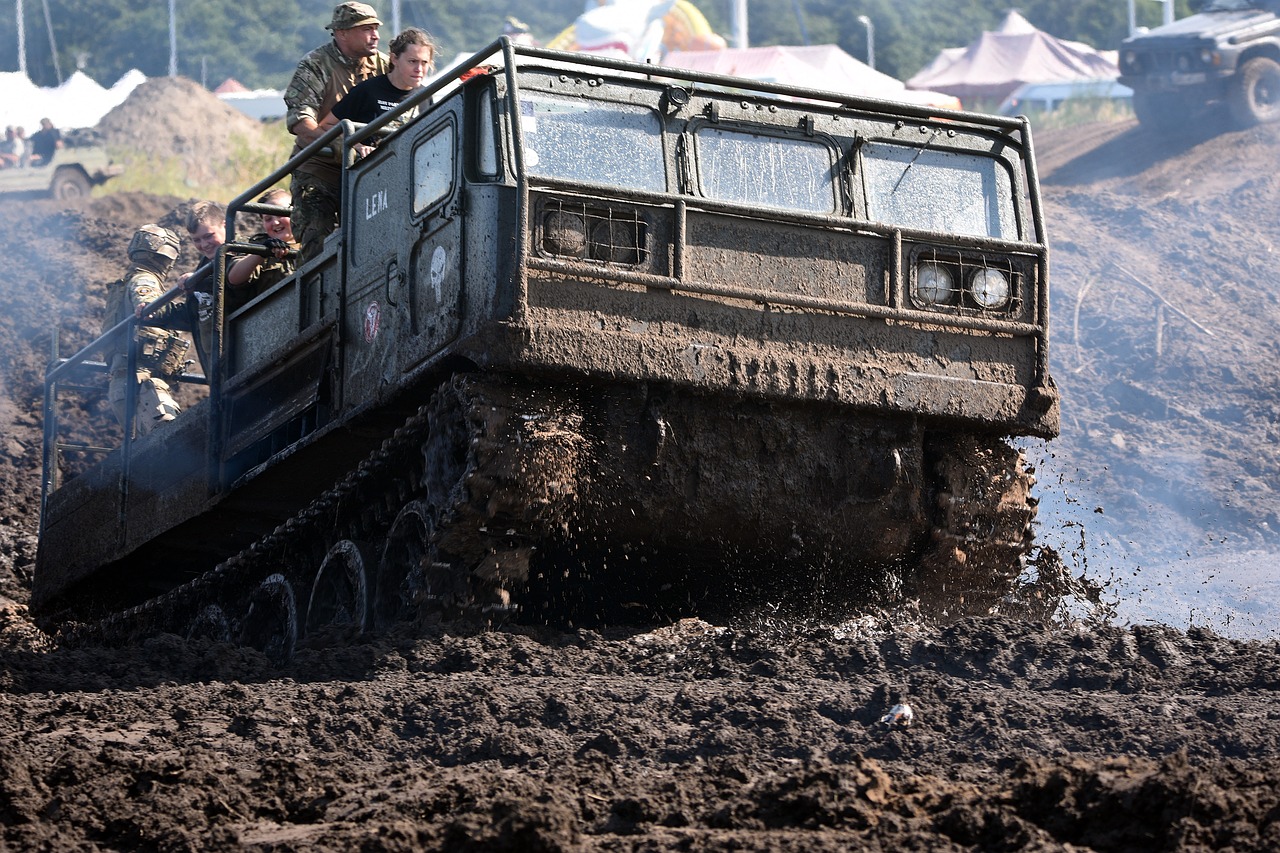
Machine Learning Applications
Machine learning (ML) is revolutionizing the capabilities of Robotic Combat Vehicles (RCVs) in profound ways. By harnessing the power of data, RCVs can enhance their performance and adapt to the ever-changing dynamics of the battlefield. Imagine a vehicle that learns from its environment, improving its operational tactics with each mission. This is not just a futuristic dream; it’s happening now!
One of the primary applications of machine learning in RCVs is through predictive analytics. By analyzing vast amounts of data from previous missions, RCVs can forecast potential threats and make informed decisions in real-time. For instance, if an RCV has been deployed in an area with a high incidence of ambushes, it can learn from these encounters and adjust its route or tactics to minimize risk. This adaptability is crucial for mission success and troop safety.
Furthermore, machine learning algorithms enable RCVs to process sensory input more effectively. With the integration of advanced sensors, these vehicles can gather data about their surroundings, including terrain, enemy positions, and even civilian presence. By employing computer vision techniques, RCVs can identify objects and classify them, which is vital in distinguishing between friend and foe in complex environments.
Another fascinating aspect of machine learning in RCVs is its role in autonomous decision-making. Imagine an RCV equipped with algorithms that allow it to assess situations and make tactical decisions without human intervention. This capability is not only a game-changer for operational efficiency but also significantly reduces the cognitive load on human operators. However, it raises important questions about accountability and control, which we will explore later.
To illustrate the impact of machine learning on RCVs, consider the following table that summarizes key applications:
| Application | Description |
|---|---|
| Predictive Analytics | Analyzes historical data to forecast threats and optimize strategies. |
| Computer Vision | Processes visual data to identify and classify objects in real-time. |
| Autonomous Decision-Making | Allows RCVs to make tactical decisions independently based on situational analysis. |
Moreover, machine learning contributes to mission planning and resource allocation. By leveraging data from various sources, RCVs can optimize their routes, conserve energy, and ensure that they are deployed in the most effective manner. This not only enhances operational efficiency but also extends the lifespan of the vehicle in the field.
In summary, the integration of machine learning into Robotic Combat Vehicles is not just enhancing their current capabilities; it’s paving the way for a new era of warfare where adaptability and intelligence are paramount. As these technologies continue to evolve, we can expect RCVs to become even more autonomous and effective in a variety of combat scenarios.
- What is machine learning in the context of RCVs? Machine learning in RCVs refers to the use of algorithms that allow these vehicles to learn from data and improve their performance over time.
- How does machine learning enhance decision-making in RCVs? Machine learning enables RCVs to analyze real-time data, predict threats, and make tactical decisions autonomously, improving operational efficiency.
- Are there ethical concerns associated with machine learning in military applications? Yes, ethical concerns include accountability for decisions made by autonomous systems and the potential for unintended consequences in civilian areas.

Real-time Data Processing
In the fast-paced world of modern warfare, has become a cornerstone for enhancing the operational effectiveness of Robotic Combat Vehicles (RCVs). Imagine a battlefield where every second counts, and decisions must be made in the blink of an eye. This is where RCVs shine, utilizing cutting-edge technologies to analyze vast amounts of data instantaneously. By processing information in real-time, RCVs can adapt to changing environments, respond to threats, and make tactical decisions that were once reserved for human operators.
At the heart of real-time data processing lies a combination of advanced sensors, communication systems, and powerful computing capabilities. RCVs are equipped with an array of sensors, including cameras, thermal imaging devices, and radar systems, which continuously gather data about their surroundings. This data is then fed into onboard computers that utilize sophisticated algorithms to interpret the information and provide actionable insights. For example, if an RCV detects enemy movement, it can quickly assess the situation, determine the level of threat, and relay that information back to human operators or even engage autonomously.
One of the key advantages of real-time data processing is its impact on situational awareness. RCVs can create a comprehensive picture of the battlefield, integrating data from multiple sources to ensure that operators have the most accurate and up-to-date information possible. This capability not only enhances the decision-making process but also significantly reduces the risk of friendly fire incidents and other operational errors. The ability to process data in real-time allows RCVs to act as force multipliers, providing critical information that can change the tide of battle.
Furthermore, real-time data processing enables RCVs to utilize machine learning techniques, which allow them to learn from past experiences and improve their performance over time. As RCVs operate in various environments and scenarios, they gather data that can be analyzed to identify patterns and trends. This ongoing learning process helps RCVs to refine their algorithms, making them more effective in future missions.
However, it's important to note that real-time data processing also comes with its own set of challenges. The sheer volume of data generated on the battlefield can be overwhelming, and ensuring that RCVs can process this information without lag is crucial. Additionally, communication infrastructure must be robust enough to support the rapid exchange of data between RCVs and their operators. Any delays in data transmission can result in missed opportunities or, worse, catastrophic failures in combat situations.
In summary, real-time data processing is a game-changer for Robotic Combat Vehicles. By harnessing the power of advanced sensors and computing technologies, RCVs can operate with a level of situational awareness and responsiveness that enhances their effectiveness on the battlefield. As technology continues to evolve, we can expect RCVs to become even more sophisticated, further integrating real-time data processing into their operational frameworks.
- What is real-time data processing in RCVs?
Real-time data processing in Robotic Combat Vehicles refers to the capability of these vehicles to analyze and respond to data immediately as it is collected, allowing for quick decision-making and enhanced situational awareness on the battlefield. - How do RCVs process data in real-time?
RCVs utilize a combination of advanced sensors, onboard computers, and sophisticated algorithms to gather and analyze data from their environment, enabling them to make informed decisions rapidly. - What are the benefits of real-time data processing for military operations?
Real-time data processing improves situational awareness, enhances decision-making, reduces operational errors, and allows RCVs to act more autonomously in dynamic combat scenarios. - What challenges do RCVs face with real-time data processing?
The main challenges include managing the large volume of data generated, ensuring robust communication systems for data transmission, and maintaining processing speed to avoid delays in decision-making.

Human-Robot Interaction
The interaction between humans and Robotic Combat Vehicles (RCVs) is a fascinating area of study that significantly impacts the effectiveness of military operations. Imagine a battlefield where soldiers communicate seamlessly with autonomous machines, directing them with mere gestures or voice commands. This isn’t science fiction; it’s the evolving reality of modern warfare. The success of RCVs hinges not just on their mechanical capabilities, but also on how well they can integrate into human teams. Effective (HRI) can enhance situational awareness, improve decision-making, and ultimately save lives.
One of the primary challenges in HRI is ensuring that communication between human operators and RCVs is intuitive and efficient. Advanced interfaces are being developed to facilitate this interaction. These interfaces include:
- Visual Displays: Providing real-time information about the RCV's status, surroundings, and mission objectives.
- Voice Commands: Allowing operators to control RCVs using natural language, making it easier to issue commands under stress.
- Gesture Recognition: Enabling operators to guide RCVs through hand signals, which can be crucial in noisy environments where verbal communication is challenging.
Moreover, the design of these interfaces is crucial. They must be user-friendly and adaptable to various operators, including those with different levels of technical expertise. The goal is to create a seamless experience where soldiers can focus on the mission rather than on learning complex controls. For instance, an RCV equipped with a simple touch-screen interface can allow a soldier to monitor multiple units at once, enhancing their operational capabilities.
Another aspect of HRI involves the feedback mechanisms that inform operators about the RCV's actions and status. This feedback can come in various forms, such as visual alerts, auditory signals, or even haptic feedback, which provides a physical sensation when a command is executed. Such feedback is vital for maintaining situational awareness, especially in dynamic environments where conditions can change rapidly.
As we look to the future, the integration of artificial intelligence (AI) into RCVs will further enhance HRI. AI algorithms can analyze data from the battlefield, providing operators with actionable insights and recommendations. This capability allows human operators to make informed decisions quickly, adapting to evolving combat scenarios. Imagine an RCV that not only follows commands but also suggests optimal strategies based on real-time data analysis. This synergy between human intuition and machine efficiency could redefine modern warfare.
However, with these advancements come challenges. The ethical implications of HRI must be considered, particularly regarding accountability and decision-making autonomy. As RCVs become more autonomous, the question arises: who is responsible for their actions? This ongoing debate highlights the need for clear guidelines and regulations governing the use of RCVs in combat situations.
In conclusion, the future of RCVs in military operations will largely depend on the effectiveness of human-robot interaction. By developing intuitive interfaces, enhancing feedback mechanisms, and integrating AI, we can create a collaborative environment where humans and robots work together seamlessly. This not only improves operational effectiveness but also ensures that soldiers remain at the forefront of decision-making, ultimately leading to safer and more successful missions.
- What is the primary goal of human-robot interaction in RCVs? The primary goal is to enhance operational effectiveness by ensuring seamless communication between human operators and robotic systems.
- How do RCVs communicate with human operators? RCVs can communicate through various interfaces, including visual displays, voice commands, and gesture recognition.
- What role does artificial intelligence play in HRI? AI enhances decision-making by providing real-time data analysis and actionable insights to human operators.
- Are there ethical concerns associated with RCVs? Yes, ethical concerns include accountability for RCV actions and the implications of autonomous decision-making in combat.
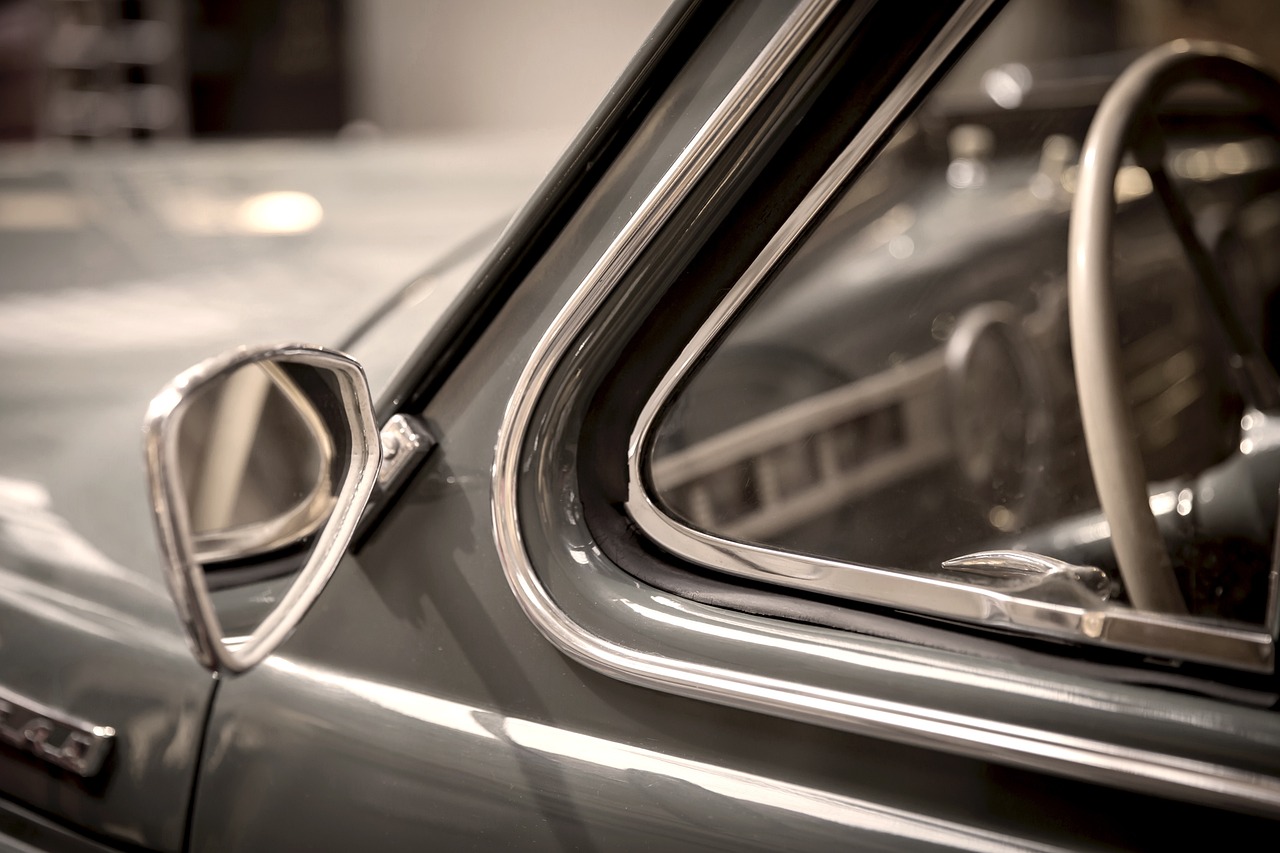
Operational Roles and Applications
Robotic Combat Vehicles (RCVs) are revolutionizing the battlefield with their diverse operational roles and applications. These advanced machines are not just tech novelties; they are becoming essential players in modern military strategies. Imagine a scenario where troops can engage in combat without putting their lives at immediate risk. That’s the magic of RCVs! They serve multiple functions, from reconnaissance missions that gather vital intelligence to logistical support that ensures supplies reach the front lines. The versatility of RCVs allows them to adapt to various operational needs, making them invaluable assets in any military arsenal.
One of the most significant roles of RCVs is in reconnaissance and surveillance. Equipped with state-of-the-art sensors and cameras, these vehicles can stealthily gather information about enemy positions and movements without exposing human soldiers to danger. They can traverse difficult terrains and provide real-time data back to command centers, allowing for informed decision-making. This capability not only enhances situational awareness but also allows for more strategic planning in combat operations.
Moreover, RCVs are increasingly utilized for combat support. Imagine a scenario where a unit is pinned down under enemy fire. An RCV can be deployed to provide cover fire or to engage the enemy directly, all while keeping soldiers safe. This remote engagement capability is a game-changer, as it minimizes casualties and maximizes operational effectiveness. The ability to operate in high-risk environments without human presence allows commanders to maintain an edge in combat situations.
Additionally, RCVs play a crucial role in logistics and supply chain management. In challenging environments, where traditional supply routes may be compromised, RCVs can transport essential supplies, ammunition, and even medical support to troops in the field. This capability is vital in maintaining operational momentum and ensuring that soldiers have the resources they need to succeed. By reducing the reliance on manned vehicles for logistical tasks, RCVs enhance efficiency and safety in supply chain operations.
To further illustrate the diverse applications of RCVs, consider the following table that highlights their various operational roles:
| Operational Role | Description |
|---|---|
| Reconnaissance | Gather intelligence and monitor enemy movements with minimal risk. |
| Combat Support | Engage in direct combat to support troops while minimizing casualties. |
| Logistics | Transport supplies and equipment to troops in challenging environments. |
| Surveillance | Monitor areas of interest and provide real-time data to command centers. |
In summary, RCVs are not just futuristic gadgets; they are reshaping how military operations are conducted. Their ability to perform a wide range of tasks—from reconnaissance to combat support and logistics—makes them indispensable in modern warfare. As technology continues to evolve, the potential for RCVs to take on even more complex roles will only increase, making them a cornerstone of future military strategies.
- What are Robotic Combat Vehicles (RCVs)? RCVs are unmanned vehicles designed for various military operations, including reconnaissance, combat support, and logistics.
- How do RCVs enhance troop safety? By engaging in dangerous tasks remotely, RCVs reduce the risk of casualties among human soldiers.
- What technologies enable RCVs to operate effectively? RCVs utilize advanced sensors, AI, and real-time data processing to navigate and perform missions autonomously.
- Can RCVs be used in humanitarian missions? Yes, RCVs can assist in disaster relief and humanitarian efforts by delivering supplies and conducting search-and-rescue operations.

Support in Combat Scenarios
Robotic Combat Vehicles (RCVs) are revolutionizing the battlefield by providing critical support in combat scenarios. Imagine a world where soldiers can engage the enemy from a safe distance, minimizing their risk while maximizing operational effectiveness. This is not just a futuristic dream; it’s happening now, thanks to the advanced capabilities of RCVs. These machines are designed to take on various roles that enhance troop safety and operational efficiency, making them invaluable assets in modern warfare.
One of the most significant advantages of RCVs is their ability to perform reconnaissance and surveillance missions. Equipped with high-definition cameras and sensors, they can gather intelligence on enemy positions and movements without putting human lives at risk. This real-time data allows commanders to make informed decisions, potentially turning the tide of battle. For instance, an RCV can scout ahead, relay information back to the command center, and even detect threats such as landmines or ambushes, all while remaining out of harm's way.
Moreover, RCVs are not just passive observers; they can actively engage in combat scenarios. With the integration of weapon systems, these vehicles can provide fire support to ground troops. Imagine a scenario where infantry units are pinned down by enemy fire. An RCV can maneuver into position and provide suppressive fire, allowing soldiers to regroup or advance. This capability not only enhances the effectiveness of ground troops but also serves to demoralize the enemy, who now has to contend with an unpredictable combatant that doesn’t tire or falter.
Another crucial aspect of RCVs is their role in logistical support. In combat zones, maintaining supply lines can be a daunting task. RCVs can transport ammunition, food, and medical supplies to frontline troops, reducing the need for humans to traverse dangerous terrain. This logistical advantage ensures that soldiers remain well-equipped and can focus on their primary mission without worrying about running out of essential supplies. In fact, studies have shown that the use of RCVs in logistical roles can significantly reduce the time and risk involved in supply chain operations.
Despite their many advantages, the deployment of RCVs in combat scenarios is not without challenges. Issues such as communication reliability and the need for robust operational protocols must be addressed to maximize their effectiveness. For instance, ensuring that RCVs can maintain a stable connection with human operators in the heat of battle is crucial. If an RCV loses communication, it could become a liability rather than an asset. Therefore, ongoing advancements in technology and training are essential to ensure that RCVs can operate seamlessly alongside human forces.
In conclusion, Robotic Combat Vehicles are proving to be game-changers in combat scenarios. Their ability to conduct reconnaissance, provide fire support, and enhance logistical operations makes them indispensable in modern warfare. As technology continues to advance, the integration of RCVs into military strategies will likely become even more pronounced, paving the way for a future where human soldiers can fight smarter, not harder.
- What are Robotic Combat Vehicles (RCVs)?
RCVs are unmanned vehicles designed for military operations, capable of performing various roles such as reconnaissance, combat support, and logistics.
- How do RCVs enhance troop safety?
By allowing soldiers to engage the enemy from a distance and perform dangerous tasks remotely, RCVs significantly reduce the risk to human life.
- Can RCVs operate autonomously?
Yes, many RCVs are equipped with advanced navigation and AI systems that allow them to operate with minimal human intervention.
- What challenges do RCVs face in combat?
Challenges include communication reliability, technological limitations, and the need for effective human-robot interaction protocols.

Logistical and Supply Chain Benefits
In the fast-paced world of modern warfare, efficiency is key, and this is where Robotic Combat Vehicles (RCVs) shine brightly. These innovative machines are not just about combat; they play a pivotal role in enhancing logistical operations and supply chain management. Imagine a battlefield where supplies are delivered seamlessly, where troops don’t have to risk their lives to transport essential equipment and ammunition. RCVs are transforming this vision into reality.
One of the primary benefits of RCVs in logistics is their ability to operate in hazardous environments. Traditional supply routes can become perilous due to enemy fire or environmental challenges. RCVs, designed to withstand such conditions, can safely navigate these treacherous terrains, ensuring that vital supplies reach their destination without endangering human lives. This capability not only enhances the safety of military personnel but also improves the overall efficiency of operations.
Moreover, RCVs can be equipped with advanced technologies that allow them to track and manage inventory in real time. With integrated systems that monitor supply levels and usage, these vehicles can automatically request resupplies when needed, reducing downtime and ensuring that troops always have what they need at their fingertips. This level of automation in logistics is akin to having a personal assistant that never sleeps, always ensuring that resources are available when required.
Another significant advantage of RCVs is their cost-effectiveness. By utilizing robotic systems for logistical tasks, military organizations can reduce the manpower required for supply operations. This shift not only cuts costs associated with personnel but also allows human resources to be redirected to more critical combat roles. In essence, RCVs are not just machines; they are force multipliers that enhance the overall effectiveness of military operations.
To illustrate the logistical advantages of RCVs, consider the following table that summarizes their key benefits:
| Benefit | Description |
|---|---|
| Safety | Reduces risk to personnel by taking over dangerous supply missions. |
| Efficiency | Ensures timely delivery of supplies, minimizing delays in operations. |
| Cost-Effectiveness | Reduces manpower needs, allowing for better allocation of human resources. |
| Real-time Monitoring | Tracks inventory and requests resupplies automatically. |
As RCV technology continues to evolve, we can expect even greater advancements in logistical capabilities. The integration of artificial intelligence and machine learning will further enhance their ability to predict supply needs and optimize routes, making them indispensable in military operations. In a world where every second counts, the logistical and supply chain benefits of RCVs are not just an enhancement; they are a necessity for future warfare.
- What are Robotic Combat Vehicles (RCVs)? RCVs are unmanned vehicles designed for military operations, capable of performing various tasks including logistics, reconnaissance, and combat support.
- How do RCVs improve safety in logistics? By taking over dangerous supply missions, RCVs reduce the risk to human personnel in combat zones.
- Can RCVs operate autonomously? Yes, many RCVs are equipped with advanced navigation systems that allow them to operate independently in various environments.
- What technologies are used in RCVs for logistics? RCVs utilize GPS, LIDAR, and AI for navigation and inventory management, ensuring efficient supply chain operations.
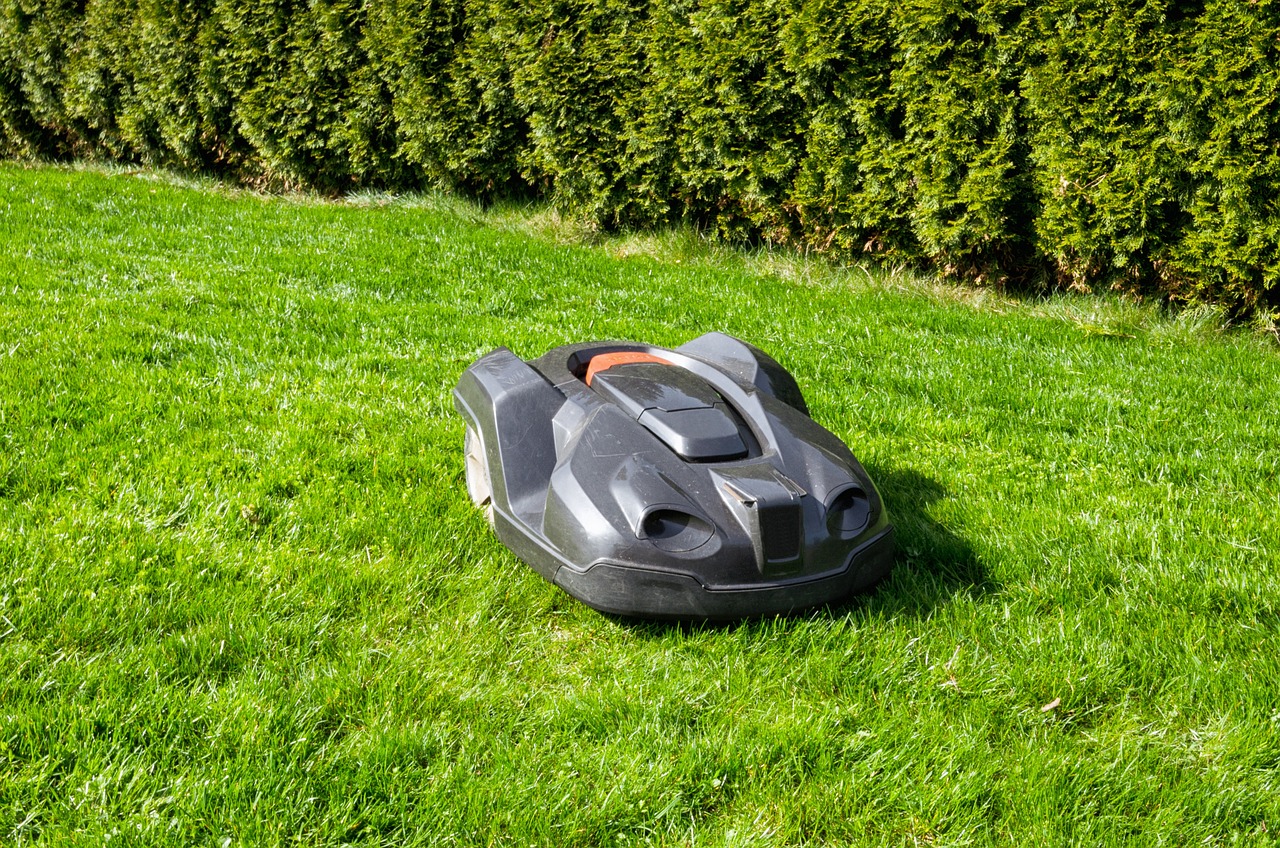
Challenges and Limitations
The deployment of Robotic Combat Vehicles (RCVs) in modern warfare comes with a set of significant challenges and limitations that must be addressed to fully harness their potential. While these machines are designed to enhance military capabilities, they are not without their flaws. Technological limitations, ethical considerations, and operational constraints are just a few of the hurdles that need to be overcome for RCVs to operate effectively in combat environments.
One of the primary technological barriers faced by RCVs is their battery life. Many RCVs are equipped with advanced sensors and systems that require substantial power, which often leads to a limited operational timeframe. Imagine a soldier relying on a robot that can only operate for a few hours before needing a recharge; it’s like having a smartphone that dies before the end of the day. This limitation not only affects the vehicle's effectiveness but also poses logistical challenges in terms of recharging and maintenance in the field.
Moreover, sensor reliability is critical for the operational success of RCVs. In hostile environments, conditions can change rapidly, and sensors must be able to adapt to various terrains and weather conditions. For instance, if a vehicle’s LIDAR system fails during a reconnaissance mission, it could lead to catastrophic consequences. Additionally, communication issues can arise when RCVs operate in areas with electronic warfare capabilities, leading to loss of control or miscommunication between human operators and robotic units.
While the ethical implications of deploying RCVs in combat are widely debated, they also present significant challenges. Questions of accountability arise when these machines are involved in decision-making processes that can lead to lethal outcomes. Who is responsible if an RCV misidentifies a target and causes civilian casualties? The ambiguity in accountability creates a moral dilemma that military and political leaders must navigate carefully. Furthermore, the potential for autonomous decision-making raises concerns about the autonomy of machines in warfare, pushing the boundaries of what is acceptable in combat scenarios.
In addition to these ethical concerns, operational constraints also limit the effectiveness of RCVs. For example, the need for robust communication systems is paramount, yet in many combat scenarios, maintaining a secure line of communication can be challenging. This limitation can hinder real-time decision-making and situational awareness, which are crucial for mission success. Additionally, the integration of RCVs into existing military structures can be complex, requiring extensive training and adaptation from human operators to effectively collaborate with these machines.
In conclusion, while RCVs offer exciting possibilities for the future of warfare, their current must be addressed to realize their full potential. From technological hurdles like battery life and sensor reliability to ethical dilemmas surrounding autonomous decision-making, the path forward is fraught with complexity. The military must invest in research and development to overcome these obstacles, ensuring that RCVs can operate effectively and ethically in the dynamic landscape of modern combat.
- What are the main technological limitations of RCVs?
RCVs face challenges such as limited battery life, sensor reliability, and communication issues in hostile environments.
- How do ethical concerns impact the deployment of RCVs?
Ethical concerns revolve around accountability for actions taken by RCVs and the implications of autonomous decision-making in warfare.
- What operational constraints affect RCV effectiveness?
Operational constraints include the need for secure communication systems and the challenges of integrating RCVs into existing military structures.

Technological Limitations
As we venture deeper into the realm of Robotic Combat Vehicles (RCVs), it's essential to confront the that currently hinder their performance on the battlefield. Despite their advanced capabilities, RCVs face several challenges that can impact their effectiveness and reliability in combat scenarios. One of the most pressing issues is battery life. Many RCVs rely on electric power sources, which can limit their operational duration. Imagine sending a highly capable robot into a hostile environment only to have it run out of power before completing its mission. This limitation can significantly affect mission planning and execution.
Another critical factor is sensor reliability. RCVs are equipped with a variety of sensors, including cameras, LIDAR, and radar, to navigate and gather intelligence. However, the performance of these sensors can be compromised in adverse weather conditions, such as heavy rain, fog, or dust storms. For instance, if a LIDAR system is obscured by mud or debris, the RCV may struggle to identify its surroundings accurately, leading to potential failures in navigation and situational awareness.
Moreover, communication issues pose a significant challenge, especially in hostile environments where jamming and interference are common. RCVs rely on robust communication systems to receive commands from human operators and relay information back to command centers. If these communication lines are disrupted, it can render the RCV effectively blind and deaf, unable to execute its mission or respond to changing battlefield conditions. In a world where milliseconds can mean the difference between success and failure, ensuring reliable communication is paramount.
To better illustrate these limitations, consider the following
| Limitation | Description | Impact on RCV Operations |
|---|---|---|
| Battery Life | Limited operational time due to reliance on electric power sources. | Can lead to incomplete missions and reduced effectiveness. |
| Sensor Reliability | Performance can be compromised in adverse weather conditions. | Affects navigation and situational awareness, risking mission failure. |
| Communication Issues | Vulnerability to jamming and interference in hostile environments. | Can render the RCV non-operational and unable to respond to commands. |
In summary, while RCVs represent a significant leap forward in military technology, their effectiveness is still curtailed by various technological limitations. Addressing these challenges will be crucial for maximizing the potential of RCVs in future military operations. As advancements continue to be made in battery technology, sensor development, and communication systems, we can expect to see improvements that will enhance the capabilities and reliability of these robotic warriors on the battlefield.
- What are the primary technological limitations of RCVs?
The main limitations include battery life, sensor reliability, and communication issues. - How does battery life affect RCV operations?
Limited battery life can lead to incomplete missions and reduced operational effectiveness. - Why are sensors important for RCVs?
Sensors provide crucial data for navigation and situational awareness, impacting mission success. - What challenges do communication issues pose for RCVs?
Communication disruptions can render RCVs non-operational, affecting their ability to receive commands and relay information.
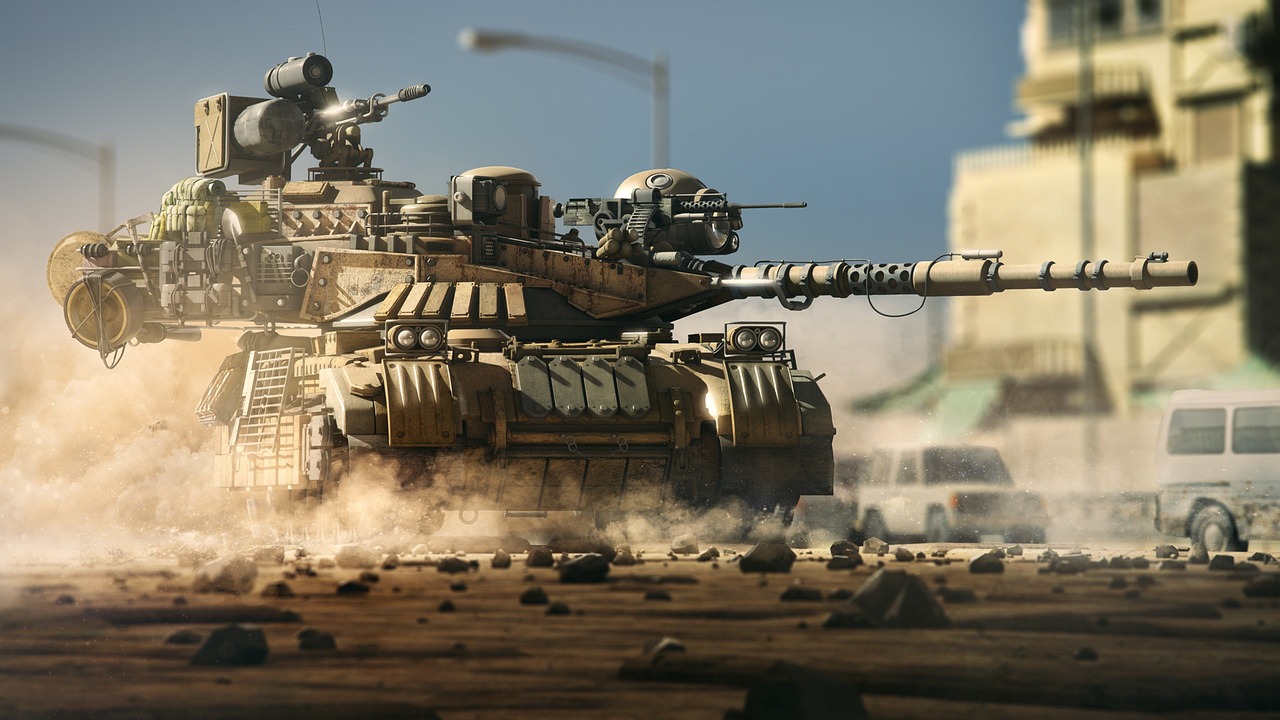
Ethical and Legal Concerns
The deployment of Robotic Combat Vehicles (RCVs) raises significant that cannot be overlooked. As these machines become more integrated into military operations, questions arise about accountability, the nature of warfare, and the potential consequences of autonomous decision-making. Imagine a battlefield where machines, rather than humans, determine the fate of lives; it’s a scenario that sends chills down the spine of even the most ardent technophiles.
One of the primary ethical concerns is accountability. In traditional warfare, soldiers are held accountable for their actions. However, when a robot makes a decision to engage a target, who is responsible? Is it the programmer who wrote the code, the military officer who deployed the vehicle, or the machine itself? This lack of clear accountability poses a significant challenge to existing legal frameworks and military ethics.
Furthermore, the autonomy of RCVs raises questions about their decision-making capabilities. Can a machine truly understand the complexities of human life and death? While advanced algorithms and artificial intelligence allow RCVs to analyze data and make decisions, they lack the moral compass that guides human soldiers. This leads to concerns about whether these machines can distinguish between combatants and non-combatants, potentially resulting in civilian casualties. The implications of such actions could be devastating, not just politically but also in terms of public perception and international relations.
Another critical aspect is the legal ramifications of using RCVs in warfare. Current international laws, such as the Geneva Conventions, were established long before the advent of robotic technology. These laws are designed to protect civilians and ensure humane treatment of combatants. As RCVs operate on the battlefield, it becomes increasingly difficult to apply these regulations effectively. For instance, if an RCV engages in combat without human intervention, does that violate international law? The ambiguity surrounding these scenarios creates a legal gray area that could lead to conflicts and disputes among nations.
Moreover, the potential for misuse of RCV technology is another pressing concern. In the wrong hands, these vehicles could be weaponized for purposes beyond military engagement, such as suppressing dissent or enforcing authoritarian regimes. This raises alarms about the possibility of RCVs being used against civilians, further complicating the ethical landscape of their deployment.
To address these concerns, it is essential for policymakers, military leaders, and ethicists to engage in ongoing dialogue about the implications of robotic warfare. Establishing clear guidelines and regulations will be crucial in ensuring that RCVs are used responsibly and ethically. This may include creating international treaties that specifically address the use of autonomous systems in combat, ensuring that human oversight remains integral to military operations.
As we move forward into an era where RCVs are likely to play a more significant role in warfare, it is vital to consider these ethical and legal dilemmas seriously. The decisions made today will shape the future of warfare and the moral fabric of our societies.
- What are the main ethical concerns regarding RCVs? The primary concerns include accountability for actions taken by RCVs, the moral implications of autonomous decision-making, and the potential for civilian casualties.
- How do current laws apply to the use of RCVs in warfare? Existing international laws, like the Geneva Conventions, may not adequately address the complexities introduced by RCVs, leading to legal ambiguities.
- Can RCVs distinguish between combatants and civilians? While RCVs use advanced algorithms to analyze data, they lack the human judgment needed to make nuanced distinctions in complex combat scenarios.
- What steps can be taken to ensure ethical use of RCVs? Policymakers should engage in dialogue to create clear guidelines and regulations, possibly including international treaties focused on autonomous systems in warfare.

The Future of RCVs in Warfare
As we peer into the horizon of military technology, the potential of Robotic Combat Vehicles (RCVs) emerges as a game-changer in modern warfare. Imagine a battlefield where human soldiers are supported by intelligent machines, capable of executing complex missions with precision and efficiency. This isn't just science fiction; it's the future we are rapidly approaching. The integration of advanced technologies such as artificial intelligence, machine learning, and autonomous systems will redefine how wars are fought, making RCVs a cornerstone of military strategy.
One of the most exciting prospects is the evolution of RCVs into more autonomous units. With advancements in AI algorithms, these vehicles will not only follow commands but will also learn from their surroundings, adapting to various combat scenarios in real time. This capability will allow RCVs to operate independently, reducing the risk to human soldiers while increasing operational efficiency. The future battlefield could see RCVs making tactical decisions on their own, evaluating threats, and executing maneuvers that were previously the domain of human operators.
Moreover, the future of RCVs will likely involve enhanced collaboration between humans and machines. As these vehicles become more sophisticated, the interfaces for human-robot interaction will need to evolve accordingly. Imagine a scenario where a soldier can communicate with an RCV through simple voice commands or even gestures, effectively turning the vehicle into an extension of their own capabilities. This seamless integration could lead to more effective missions, where human intuition and machine precision work hand in hand.
Another critical aspect to consider is the role of RCVs in logistics and supply chain management. As military operations become increasingly complex, the need for efficient logistics grows. RCVs could revolutionize this area by autonomously transporting supplies, conducting maintenance, and even evacuating casualties from the battlefield. This would not only enhance operational readiness but also ensure that troops have the resources they need, when they need them, without putting additional human lives at risk.
However, as we look forward, we must also address the ethical and legal challenges that come with deploying RCVs in warfare. Questions surrounding accountability, the decision-making autonomy of machines, and the potential impact on civilian populations are paramount. As RCVs take on more responsibilities, it is crucial that we establish clear guidelines and regulations to govern their use, ensuring that they enhance, rather than compromise, ethical standards in military operations.
In conclusion, the future of RCVs in warfare is bright and filled with potential. As technology continues to advance, these robotic vehicles will play an increasingly vital role on the battlefield. They promise to enhance operational effectiveness, improve troop safety, and redefine military strategies. However, with great power comes great responsibility, and it is essential that as we embrace this technological revolution, we also navigate the accompanying ethical landscape with care.
- What are Robotic Combat Vehicles (RCVs)?
RCVs are unmanned vehicles designed for military operations, capable of conducting missions such as reconnaissance, logistics, and combat support. - How do RCVs enhance troop safety?
By taking on dangerous tasks, RCVs reduce the risk to human soldiers, allowing them to focus on strategy and decision-making. - What technologies are integrated into RCVs?
RCVs utilize advanced technologies such as artificial intelligence, machine learning, GPS, LIDAR, and computer vision for navigation and operational effectiveness. - What are the ethical concerns regarding RCVs?
Concerns include accountability, the autonomy of decision-making, and potential impacts on civilian populations during military operations.
Frequently Asked Questions
- What are Robotic Combat Vehicles (RCVs)?
Robotic Combat Vehicles (RCVs) are advanced unmanned vehicles designed for military operations. They are equipped with various technologies that allow them to perform tasks such as reconnaissance, surveillance, and direct combat support, all while minimizing the risk to human soldiers.
- How do RCVs navigate autonomously?
RCVs utilize a combination of technologies such as GPS, LIDAR, and computer vision systems to navigate their environment. These systems work together to create a detailed map of the surroundings, enabling the vehicle to make real-time decisions and navigate without human intervention.
- What role does artificial intelligence play in RCVs?
Artificial intelligence enhances the decision-making capabilities of RCVs by allowing them to analyze data and adapt to changing combat conditions. AI algorithms enable RCVs to execute complex missions and respond effectively to dynamic environments.
- Can RCVs learn from their experiences?
Yes! RCVs employ machine learning techniques that allow them to improve their performance over time. By analyzing past data and outcomes, they can refine their strategies and increase the likelihood of mission success.
- What are the operational roles of RCVs?
RCVs serve multiple roles in military operations, including reconnaissance, surveillance, direct combat support, and logistical assistance. Their versatility makes them valuable assets on the battlefield, enhancing the effectiveness of military strategies.
- What challenges do RCVs face on the battlefield?
RCVs encounter several challenges, such as technological limitations like battery life and sensor reliability, as well as ethical concerns regarding their use in warfare. These issues must be addressed to fully realize the potential of RCVs in military applications.
- How do RCVs impact troop safety?
RCVs enhance troop safety by allowing remote engagement in combat scenarios. By deploying these vehicles, soldiers can engage the enemy from a safe distance, reducing the risk of casualties while still maintaining operational effectiveness.
- What is the future of RCVs in warfare?
The future of RCVs in warfare looks promising, with ongoing advancements in technology set to improve their capabilities. As military strategies evolve, RCVs are expected to play an increasingly significant role in shaping modern combat tactics.





